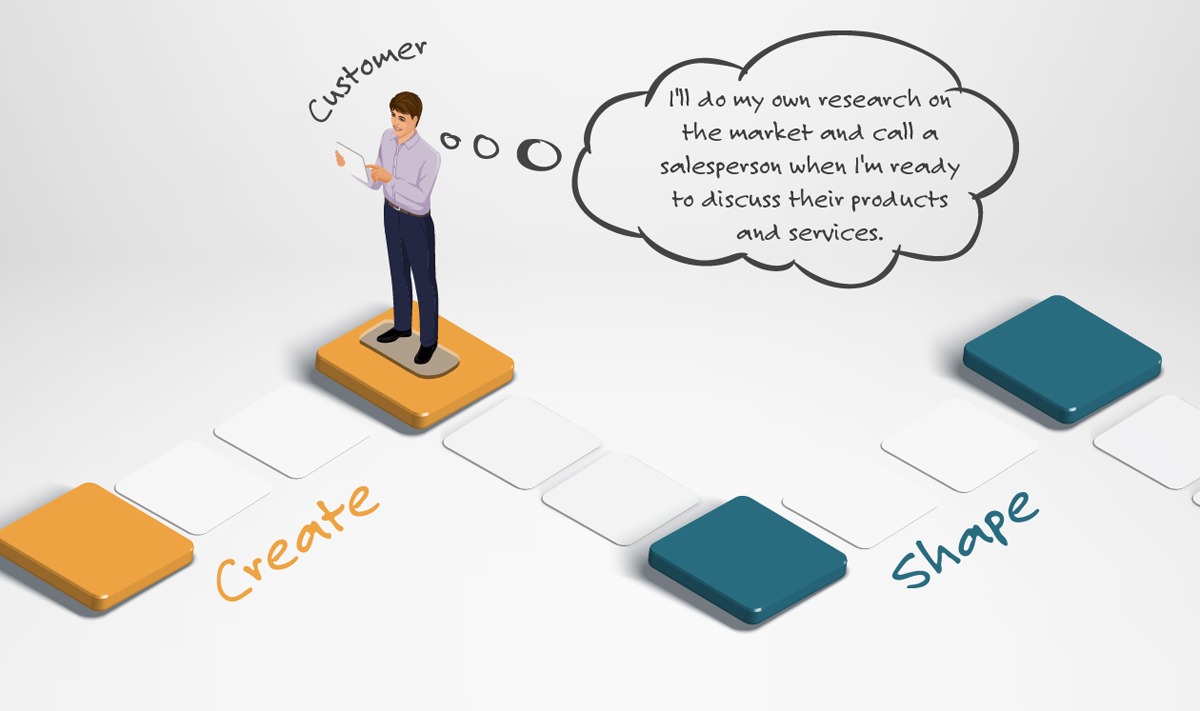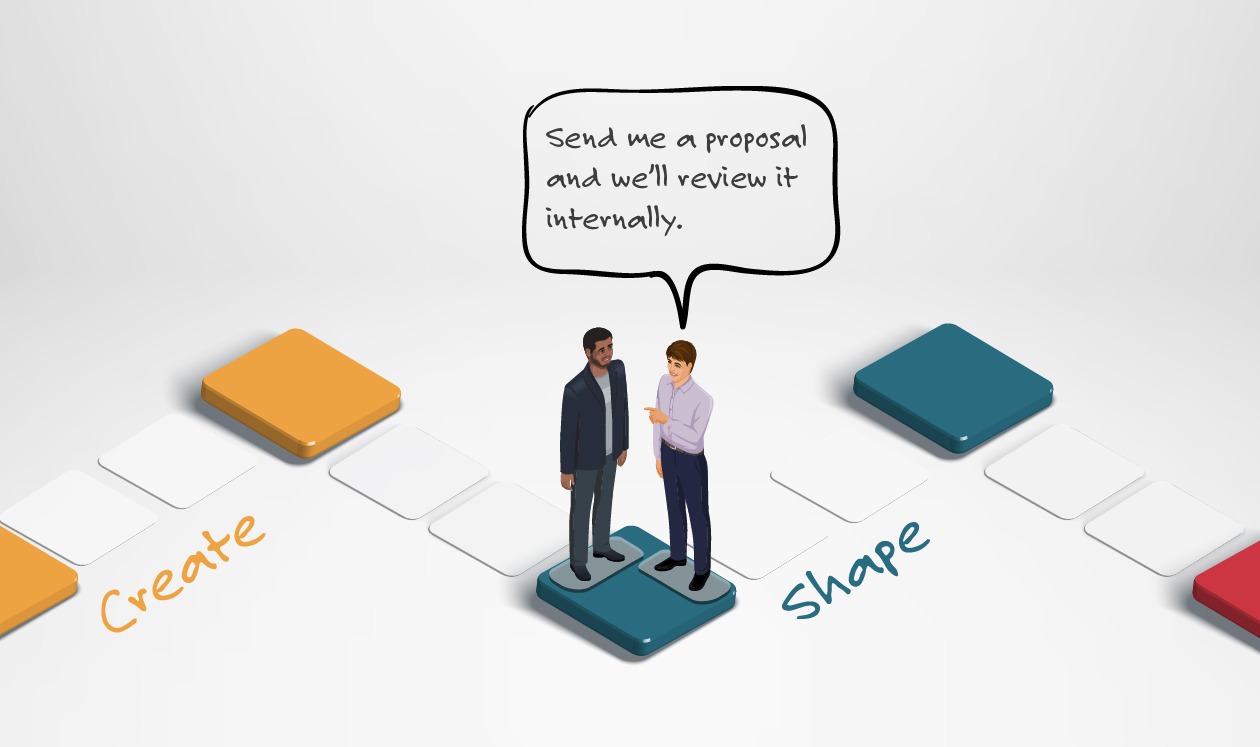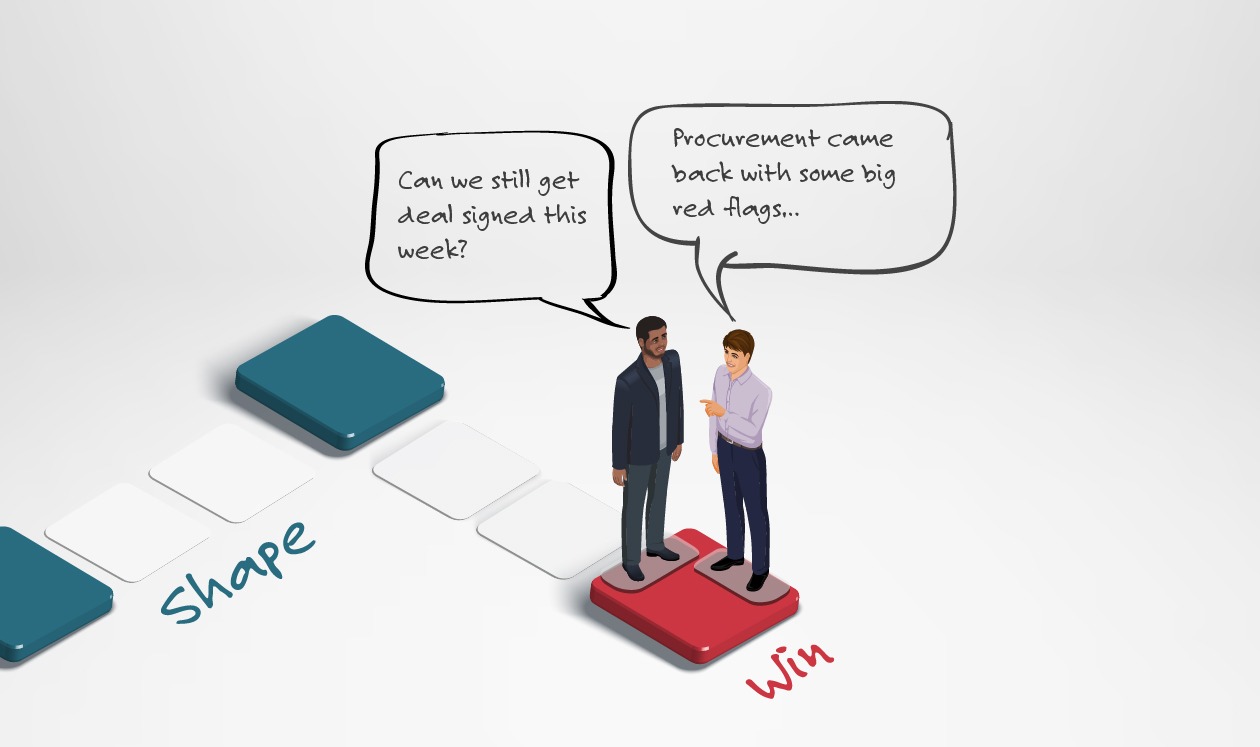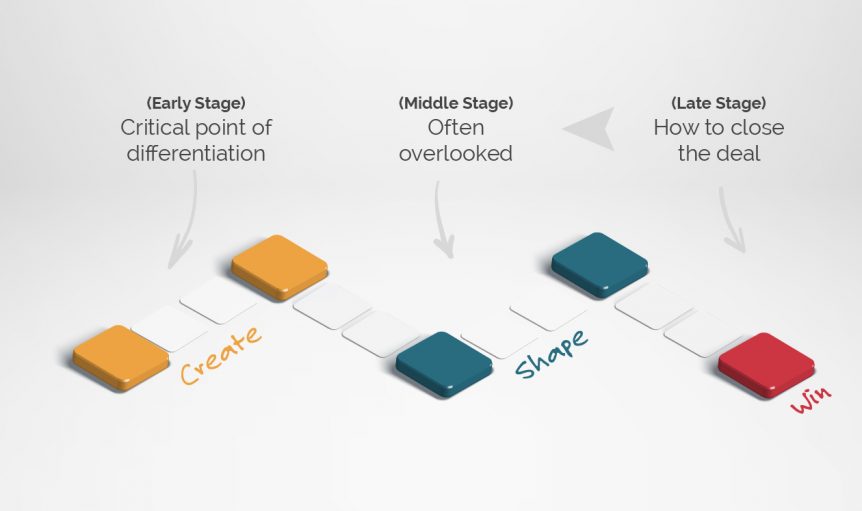This is the first in a four-part series about using conversational sales to help your sales teams maximize sales performance.
You’ve heard it before: enterprise salespeople have to prove their value in every buyer interaction because buyers are more fickle than ever. But salespeople don’t have a good roadmap that helps them with the process of engaging with buyers. Sales methodologies can help enterprise sellers improve the ability to convey value to buyers, but typically fall short when it comes to helping them engage in the first place.
In this post, you’ll learn about sales strategies to help enterprise sellers engage more effectively with buyers in the early, middle and late stages of the buying process, engaging in consultative selling to improve their pipelines and maximize every revenue opportunity.
Early-stage selling: Don’t wait for them to come to you

Not all that long ago, enterprise sellers were essential gatekeepers of information in the early stages of the selling process: if a buyer wanted to explore a new product, they had to engage with a salesperson to find out about it.
No more, though. Gartner, Forrester, and other analysts all agree that buyers are well into their journey–60% or more–before they want to engage with salespeople. Why? Because salespeople are no longer the arbiters of truth; buyers have the Internet to provide the information they need.
Your salespeople can’t sit back and wait until their prospects are 60% done with the process. Instead, successful salespeople need to engage in proactive prospecting, becoming well-versed about the companies in their territory, industry nuances, details about buyer personas, and more.
The more salespeople know and can demonstrate to buyers, the likelier it is that they will engage in conversational sales where they can both learn about key business drivers and share insights that will demonstrate value to buyers–and enable them to turn conversations into opportunities.
Middle-stage selling: Manage complexity to increase value

Watching someone juggle three balls may impress you a little, but if they can keep five or six in the air, you’re likely to be really impressed. Now think about today’s enterprise sales processes, where there can be upwards of a dozen stakeholders in the buying process, any of whom with the power to kill your deal or make it twice as big. Relying on your one or two champions to navigate your deals is like making sure you keep only one or two balls in the air–soon your juggling act will fail.
Successful salespeople don’t wait for “gotchas” to pop up in unexpected places, turning their pipelines into shambles. Instead, they build on the insights they’ve gained and shared in early-stage conversations to navigate the buying process, engage in conversational sales with key stakeholders across the enterprise to shape the deal, and work in partnership with the buyers to develop a value-based solution.
Late-stage selling: Build and follow through

You’ve seen that basketball game where the star player has an open shot that he’s been imagining and preparing for his whole life. The confident players are the ones who always sink the shot, just like the star sales reps are the ones who have done their homework and just need to follow through to close the deal.
The key to late-stage selling is following through on everything that’s done beforehand and seeing the deal to completion. Successful salespeople build on the sales conversations they’ve had in the early and middle stages of the selling process, making value-based recommendations based on mutual agreement with all of the key stakeholders. That kind of partnership results in improved sales performance and bigger deals.
Want to find out sales strategies your reps can master in the early, middle, and late-stages of selling? Subscribe to this blog and stay tuned for deeper dives into each stage. If you want to find out more right away, click here to read about our agile approach.

